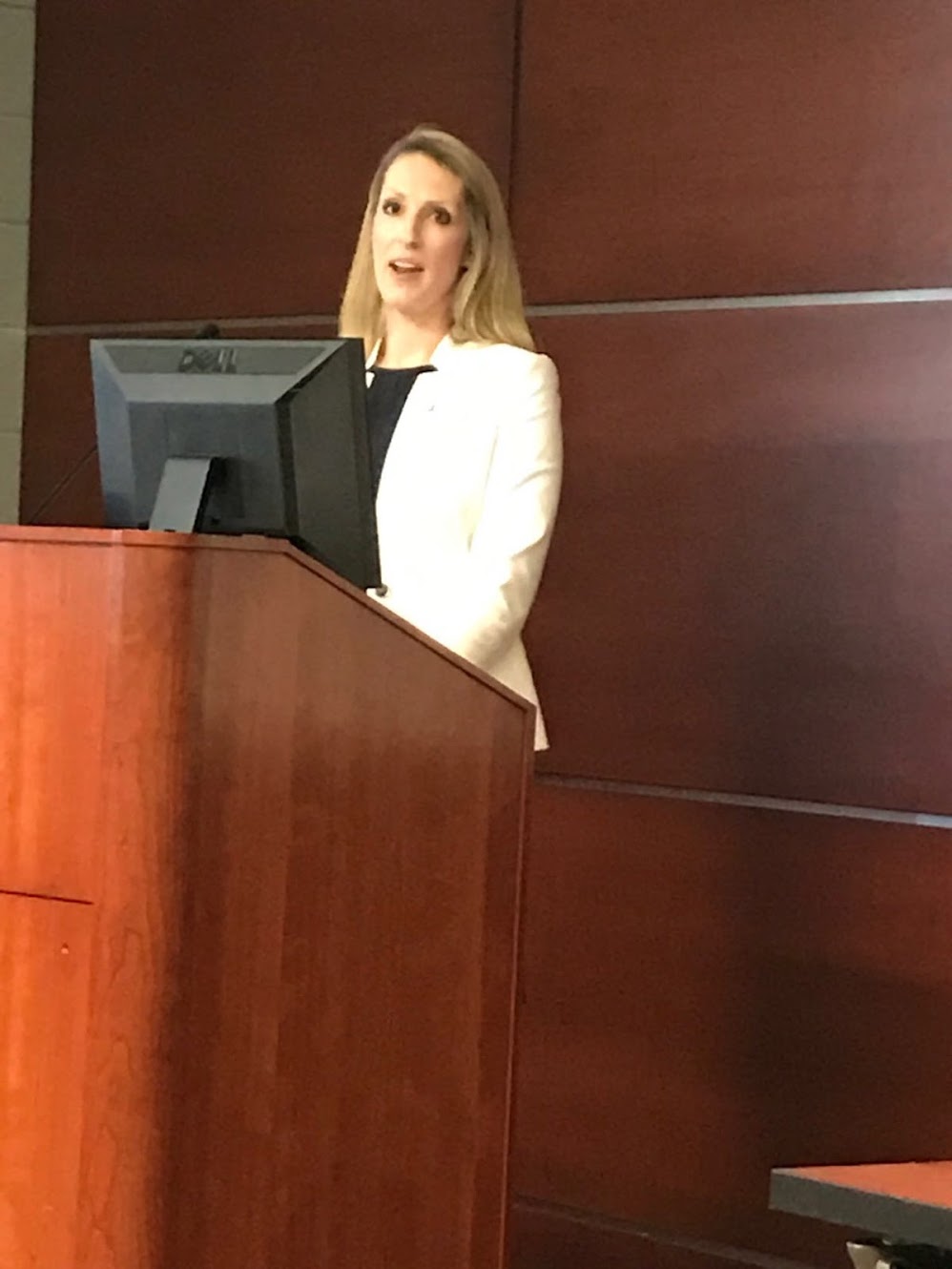Economic Equality Caucus
which advocates for economic equality across the USA.
| Home | Organizational Structure | State Coordinators | Executive Director | Caucus Articles | Memberships | |||||
| "Delta Vision, Delta Voices" | ||||||||||
|
Help Advocate for Economic Progress and Equality. Donate to the Delta Caucus/Economic Equality Caucus. |
||||||||||
Delta Grassroots Caucus Events

Credit Michael Hibblen/ KUAR News, Arkansas Public Radio; Former President Bill Clinton speaking to the Delta Grassroots Caucus on May 2, 2013, at the University of Arkansas Clinton School of Public Service, Little Rock

U. S. Senator John Boozman, Arkansas, at a Delta Grassroots Caucus meeting at the US Capitol

Brad Cole, Executive Director of the Municipal League of Illinois; previously a senior aide to former Republican US Sen. Mark Kirk of Illinois, earlier Mayor of Carbondale, Illinois, veteran Delta regional advocate, speaking at the Delta regional conference in West Memphis, Arkansas on April 26, 2019.

President Bill Clinton makes a comment to Delta Caucus Director Lee Powell at a meeting in Blytheville, Arkansas (in the northeast Arkansas Delta) on Nov. 2, 2014

The Delta Caucus would like to pay tribute to the late, great U.S. Sen. Thad Cochran of Mississippi, a powerful force in the US Senate for decades and a champion for the Delta. Sen. Cochran passed away on May 30, 2019. He spoke to the Delta Caucus on many occasions over the years (he is pictured above speaking to a Caucus event on Capitol Hill in Washington, DC) and his thoughtful, courteous and bipartisan leadership will be sorely missed.

Marcie Lawson, Executive Director, Sikeston, Missouri Regional Chamber and Area Economic Development Corporation, speaking at the Delta regional conference in West Memphis, Arkansas on April 26, 2019.

Alan Gumbel, Greater Memphis Alliance for a Competitive Workforce, Memphis, Tennessee, speaking at the Delta regional conference in West Memphis, Arkansas on April 26, 2019.

Mayor Shirley Washington of Pine Bluff, AR, speaking to the Delta Caucus at the Arkansas Capitol Rotunda in 2017.
Data on Poverty in USA and the Greater Delta Over Time, 1960 to 2020
Posted on November 13, 2023 at 02:10 PM
Short List of Constructive Economic Policies and Poverty Data in the USA and Delta Region Over Time
Executive Summary
The basic trend has been a substantial, gradual decrease in poverty from the very high levels of 1959 to 2020. The pandemic will cause poverty to rise again but it will take time to develop exact figures.
1959: national poverty at 22%, Delta states ranging from 54% in Mississippi to 40% in Louisiana;
2019: national level at 11.5%, Delta states ranging from 19.2% in Mississippi to 12.9% in Alabama).
CONCLUSION IN A NUTSHELL: Poverty nationally was cut in half and Delta states poverty levels cut by almost two thirds by 2020, but that is relative to 1959, when US poverty levels were exorbitantly high for an industrialized country.
Poverty is clearly rising again recently due to the pandemic and then the end of pandemic aid.
Even the pandemic levels will be substantially lower than the exorbitant levels of the era before 1965.
Poverty is still higher in the USA than in many other industrialized countries and the Delta figures are higher than the national average.
Key initiatives for promoting economic development and reducing poverty:
There are many other valuable initiatives, but we need to focus on a manageable short list of priorities—this is one suggested list:
–Job creation at good wages. This is first and foremost, with small business development being essential, including a wide range of initiatives with examples of USDA rural development and other programs, Small Business Administration,
–Infrastructure: US Dept. of Transportation and other state and federal and state infrastructure initiatives that create jobs will improving transportation, housing and other infrastructure. Education and workforce development: This is the key to maintaining and creating good jobs, from K-12 to higher education;
–Health care for underserved populations;
–Hunger and nutrition—SNAP, WIC, school meals, and other USDA nutrition programs. NOTE: While SNAP is primarily the main bastion against hunger, it also has an economic multiplier impact, with each $1.00 spent by SNAP generating about $1.54 in economic activity.
–Delta Heritage tourism: these initiatives bring in tourist dollars while informing people of the region’s great historical and cultural story;
Delta Regional Authority budget is now approximately $30 million, its highest level after.
This contrasts with the situation in earlier decades: the DRA budget decreased to $5 or $6 million in the 2000s, then gradually rose through the years to $12 million and eventually $30 million. This is a modest budget but is supplemental to all the other federal and state programs.
Poverty in the USA and the Greater Delta Region Over Time
1959 22%
1966 15%
2022 11.5%
There was a sharp reduction in poverty from 1959 to 1966 after the major Medicaid, Medicare and other constructive programs were created. Thereafter there were fluctuations with economic cycles and historical eras, but the poverty level did not return to the very high levels of 1959 and continued a general downward pattern until recently. The pandemic of course is making poverty increase currently. Note: Columbia University adjusted more strictly for historical inflation and found that poverty was 26% in 1967 and 16% in 2012.
The likelihood is that Columbia is more precise, but all of these are estimates; adding approximately 4 percentage points to most of the US government figures to more closely align with Columbia is likely to be a more accurate estimate.
The Netherlands poverty rate in 2023 is only 4.8%.
The Dutch are one of the very few countries with a safety net strong enough to keep poverty very low. There is no reason the USA and other countries cannot follow their example.
Comparative note on poverty figures for other industrialized economies in 2021 according to Statista:
United Kingdom 11.2% Germany 10.9% France 8.4%
Summary of Delta poverty levels
Fundamental conclusion: poverty in the Delta by 2019 had greatly declined as compared with the 1960 levels, although the 1960 levels were alarmingly high.
–In 1960 the heartland Delta states had exceedingly high poverty
ranging from Mississippi over half at 54.5%; Arkansas at 47.5%,
Alabama at 42.5% and Louisiana at 40%.
–By 2019 all the states had improved substantially as compared to the high levels of 1960: Mississippi at 19.2%, Louisiana at 17.9%; Arkansas at 14.1%, and Alabama at 12.9.%
–In 1960 the six heartland Delta states states had very high poverty ranging from 54.5% in Mississippi to 40% in Louisiana;
–By 1980, Mississippi’s poverty had declined to 24.3% and the others were close to 20 or 21%;
–By 1990, poverty had in most states not changed much from 1980 and ranged from 16.9% in Tennessee to 25.7% in Mississippi;
–By 2000, all six states had improved substantially to 12.6% in Kentucky and Louisiana, 14.9% in Mississippi and the highest was Arkansas at 16.5% (Arkansas was not the highest in all other years so this was an exception);
–In 2010, poverty had risen again after the 2007-08 recession: with Arkansas the lowest at 15.3% and Mississippi the highest at 22.5%;
–By 2019 there was substantial improvement with Mississippi improving somewhat to 19.2%, Arkansas at 14.1%, Tennessee at 13.1% and Alabama lowest at 12.9%;
The pandemic is driving poverty levels higher once again. Poverty levels are combined averages over about three years to be accurate, so getting accurate very recent figures is a challenge, but reports from food banks, hunger and nutrition advocates and others report alarming increases.
Poverty data for the six Delta heartland states over time:
Arkansas:
1960 47.5%
1970 27.8%
1980 21.5%
1990 19.6%
2000 16.5%
2010 15.3%
2019 14.1%
Alabama
1960 42.5%
1970 25,4%
1980 21.2%
1990 19.2%
2000 13.3%
2010 17.2%
2019 12.9%
Kentucky
1980 19.3%
1990 17.3%
2000 12.6%
2010 17.7%
2019 13.6%
Louisiana
1980 20.3%
1990 23.6%
2000 12.6%
2010 21.5%
2019 17.9%
Mississippi
1960 54.5%
1980 24.3%
1990 25.7%
2000 14.9%
2010 22.5%
2019 19.2%
Tennessee
1980
19.6%
1990
16.9%
2000
13.5%
2010
16.7%
2019
13.1%
Note on the statistical sources: (Illinois and Missouri are not included because their Delta areas are relatively small parts of these states, and significant, large non-Delta areas in those two states are relatively much more prosperous than the Delta heartland. Statewide figures in those states as a whole would be quite substantially at variance with the Delta areas. )
There are variations in all the states, and the Delta areas generally have somewhat higher poverty rates than the rest of the state. But Arkansas, Mississippi, Louisiana have large Delta areas including over half of those states; western Kentucky and western Tennessee are Delta areas, but there are also economically distressed areas in those states in the eastern Appalachian areas. The Alabama Black Belt is generally more economically distressed than the rest of the state, but there are substantial areas of economic distress outside the Black Belt as well. Statistics for these states provide a broadly accurate general picture of the situations there.
Sources are the US Census and federal government at data.gov; World Bank; Eurostat from the European Commission; Columbia University. There are some differences in the statistics but the basic trends are broadly similar for most of the sources. All of these figures are estimates, although they are likely to give fairly close projections of the real environment.
Exception: Columbia University finds poverty to be significantly higher because it adjusts more strictly for historical inflation. We include both results where feasible, but it is likely that adding 3 to 4 percentage points to the government officials to make them more closely align with the Columbia estimates will reach the most accurate estimate.
Back to the top